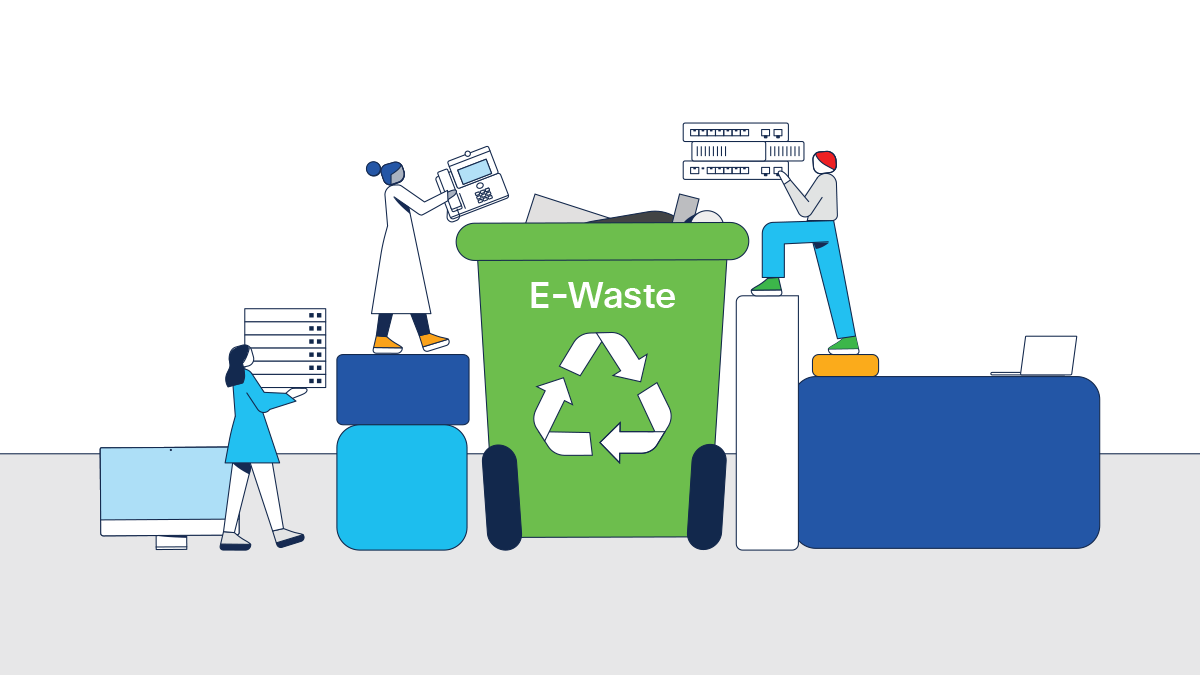Do you feel a little lost when people refer to certain environmental sustainability topics and not sure where to start for more information? Sustainability 101 is a series of blogs you can turn to for information on various environmental concepts that may come up at work, during discussions with friends, and even at your annual holiday gathering.
We’ve all been there: you have an electronic product that no longer works, like your favorite headphones. Instead of helping you listen to music, they have now become what is sometimes called “e-waste”.
What is e-waste and why does it matter?
According to the US Environmental Protection Agency (EPA), e-waste is a term “often used to describe used electronics that are nearing the end of their useful life and are discarded, donated, or given to a recycler. Although e-waste is a commonly used term, the EPA considers e-waste to be a subset of used electronics and recognizes the intrinsic value of these materials that can be reused, refurbished or recycled to minimize the actual waste that could end up in a landfill. or improperly disposed of in an unprotected landfill either in the US or abroad.”
The European Commission explains that “E-waste contains a complex mixture of materials, some of which are hazardous. These can cause major environmental and health problems if decommissioned devices are not handled properly.”
Furthermore, according to the European Commission, “Modern electronics also contain scarce and expensive resources, including critical raw materials. These can be recycled and reused if the waste is managed effectively. Improving the collection, treatment and recycling of end-of-life electrical and electronic equipment can increase resource efficiency and support the transition to a circular economy. It can also contribute to securing the supply of critical raw materials.”
How much e-waste is there?
The United Nations (UN) Global E-waste Monitor 2024 reports that “a record 62 million tonnes of e-waste were generated in 2022 – 82% more than in 2010; we are targeting a further 32% increase to 82 million tonnes in 2030.”
Furthermore, according to the Global E-Waste Monitor 2024, “less than one-quarter (22.3%) of annual e-waste was documented to be properly collected and recycled in 2022, leaving US$62 billion worth of renewable natural resources unaccounted for and increasing pollution risks for communities around the world.”
To evolve into a circular economy, we need to be much more efficient with our resources, and an important aspect of this is working collectively to recover the valuable raw materials in e-waste.
How can e-waste be reduced?
To reduce e-waste, we need to increase the number of products that are returned to companies that can reuse, remanufacture, sell or properly recycle them. This concept is often known as “product take-back” when products are returned to the manufacturer for responsible reuse or recycling.
Eco-friendly e-waste management (ESM) can help improve environmental sustainability in the technology sector and minimize environmental impacts. The industry – working with many stakeholder groups, including recyclers – has done much to improve e-waste ESM.
What does Cisco do?
One of the key priorities of our next-generation sustainable environment strategy, The Plan for Possible, is evolving into a regenerative, circular model.
Cisco aims to transform our business to extend the life of our products and provide sustainable services.
We embed circularity in how we design our products and packaging. This means designing to enable reuse, minimize environmental impact, foster innovation and realize value for our shareholders. We’re deploying new offerings that help Cisco and our customers get more value throughout the product lifecycle, such as payment solutions and as-a-service models designed with circularity in mind.
Cisco has created circular design principles that are factored into the company’s entire new product development process, so our product and packaging designs can take a more circular approach. Our goal is to incorporate circular design principles into 100% of new Cisco products and packaging by our fiscal year 2025, and we’re working with our internal engineering and supply chain teams and our suppliers to make that happen.
And we strive to minimize waste and extend the life cycle of our products by recapturing hardware and repositioning these assets through remanufacturing, reuse and recycling. The Cisco Takeback and Reuse Program is a free service that we offer to our customers and partners, and we reuse or recycle nearly 100% of the products that are returned to us. The service helps customers support circular economy efforts.
We also realize how important it is to involve our employees in the circular economy. Cisco’s annual IT Recycling Day is held at several Cisco campus locations, usually around Earth Day. Since Cisco began hosting these events in 1995 through fiscal year 2023, our employees and suppliers have helped recycle 3,283 metric tons of used electronics.
To evolve towards a circular economy, value chains need to work together in this process – including customers returning their used products, partners having circular conversations in business models, and suppliers promoting the sustainability of materials used in products.
Learn more about Cisco’s initiatives, goals and/or commitments and our latest impact on our Environmental, Social and Governance (ESG) Reporting Center and Cisco’s Take Back and Reuse website.
Share:

